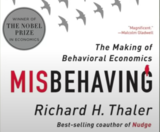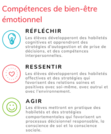
This resource contains: Financial Literacy Resource Guides for teachers, PowerPoint lesson and student activity on investing.
- Subject:
- Financial Literacy
- Material Type:
- Lesson
- Author:
- Cindy Lowe
- Date Added:
- 09/13/2024

This resource contains: Financial Literacy Resource Guides for teachers, PowerPoint lesson and student activity on investing.

This resource contains: Financial Literacy Resource presentation for teachers, and an activity on a paystubb and payroll deductions.

This resource contains: Financial Literacy Resource Guides for teachers, projects, classroom resources, PowerPoint lessons, Excel and Google Sheets on topics including: investing, a project for after high school, financial plan, credit score and consumer choices.

"Five Ways People Are Dumb With Money Listening Guide and video" - Humans can’t quite remove emotions from the money-making decisions process! Video: https://youtu.be/n1b7piSmmME?si=bi0PwhForYpec3cq

What's the Link Between Physical, Mental & Financial Health? https://youtu.be/q4RVNm1j1LY?si=u2YR_iwj9ZE7-zJa and listening guide
Students can explore a video and the Money and Youth textbook to look at various ways to make money and earn an income. There are many considerations for each type of employment.

Whether it’s buying that $5 coffee, a new piece of clothing that we don’t really need, or just trying to make ends meet, saving money is oftentimes easier said than done. We are often influenced by a variety of factors that make it difficult to save money. Many cartoonists have observed these challenges and wittily depict them in their cartoons. In this activity, you will pick one of the cartoons provided below and analyze how it portrays the challenges we encounter when it comes to saving money.

Your brain is biased. Over millions of years of evolution, it’s been programmed to prioritize the present over the future, so when we try to save money, it feels like we’re depriving ourselves of joy. Why save for 10 years from now when there’s so much to do right now? Neuroscientist Alex Korb explains how our brain circuits focused on thinking, habits, and rewards interact to impact our financial decisions. But even though we favor short-term indulgences over our long-term best interests, research suggests it’s possible to undo this harmful pattern with one simple thing: a vivid imagination. Learn more about how you can rewire your brain and change your behavior to live the life you’ve always wanted. This is Your Brain on Money.

Students will be able to reflect on a variety of personal values and how these values can influence their financial decisions. Students can also use the "MOVE" activity to explore thier own beliefs and alignments with certain "money value statements". This activity can also demonstrate how values differ from person to person.

Ces activités axées sur le bien-être émotionnel aideront à mieux comprendre le concept de bien-être émotionnel et à apprendre des stratégies et des habiletés qui les aideront à gérer les émotions et surmonter les obstacles.
Les élèves vont:
-réfléchir
-ressentir
-agir
**pour tous les niveaux

Vidéos, matériel audio, visites virtuelles et activités artistiques fournis par le Musée des beaux-arts du Canada pour les classes primaires et secondaires!

Ce journal vous offre les actualités de la France et autour du monde. Provenant de Paris.

Un journal d'actualités provenant de la France.

Le journal "Le Monde" de la France qui discute des actualités.

An interactive applet and associated web page that demonstrate acute angles (those less than 90 deg). The applet presents an angle (initially acute) that the user can adjust by dragging the end points of the line segments forming the angle. As it changes it shows the angle measure and a message that indicate which type of angle it is. There a software 'detents' that make it easy capture exact angles such as 90 degrees and 180 degrees The message and angle measures can be turned off to facilitate classroom discussion. The text on the page has links to other pages defining each angle type in depth. Applet can be enlarged to full screen size for use with a classroom projector. This resource is a component of the Math Open Reference Interactive Geometry textbook project at http://www.mathopenref.com.

An interactive applet and associated web page that demonstrate the three types of triangle: acute, obtuse and right. The applet shows a triangle that is initially acute (all angles less then 90 degrees) which the user can reshape by dragging any vertex. There is a message changes in real time while the triangle is being dragged that tells if the triangle is an acute, right or obtuse triangle and gives the reason why. By experimenting with the triangle student can develop an intuitive sense of the difference between these three classes of triangle. Applet can be enlarged to full screen size for use with a classroom projector. This resource is a component of the Math Open Reference Interactive Geometry textbook project at http://www.mathopenref.com.

In this unit of study students learn about adaptations and how they help animals survive. They will apply this knowledge to design new technologies. This unit integrates nine STEM attributes and was developed as part of the South Metro-Salem STEM Partnership's Teacher Leadership Team. Any instructional materials are included within this unit of study.

Students will plan and design an imaginary organism that lives in the Temperate Deciduous Forest, Tropical Rainforest, or Desert. Students will then identify three adaptations of this animal, and determine how the adaptations of that animal may respond to a change in the ecosystem.

This activity first asks the students to study the patterns of bird flight and understand that four main forces affect the flight abilities of a bird. They will study the shape, feather structure, and resulting differences in the pattern of flight. They will then look at several articles that feature newly designed planes and the birds that they are modeled after. The final component of this activity is to watch the Nature documentary, "Raptor Force" which chronicles the flight patterns of birds, how researchers study these animals, and what interests our military and aeronautical engineers about these natural adaptations. This activity serves as an extension to the biomimetics lesson. Although students will not be using this information in the design process for their desert resort, it provides interesting information pertaining to the current use of biomimetics in the field of aviation. Students may extend their design process by using this information to create a means of transportation to and from the resort if they chose to.

Name of Student: ___________________________________ Date: __________________
EAL Teacher ________________________ Classroom Teacher ___________________ CFR Level: ______
The following adaptations can support this student’s needs. As the semester proceeds, additional adaptations may be identified and others may be discontinued. Check subsequent adaptations using a different coloured pen.